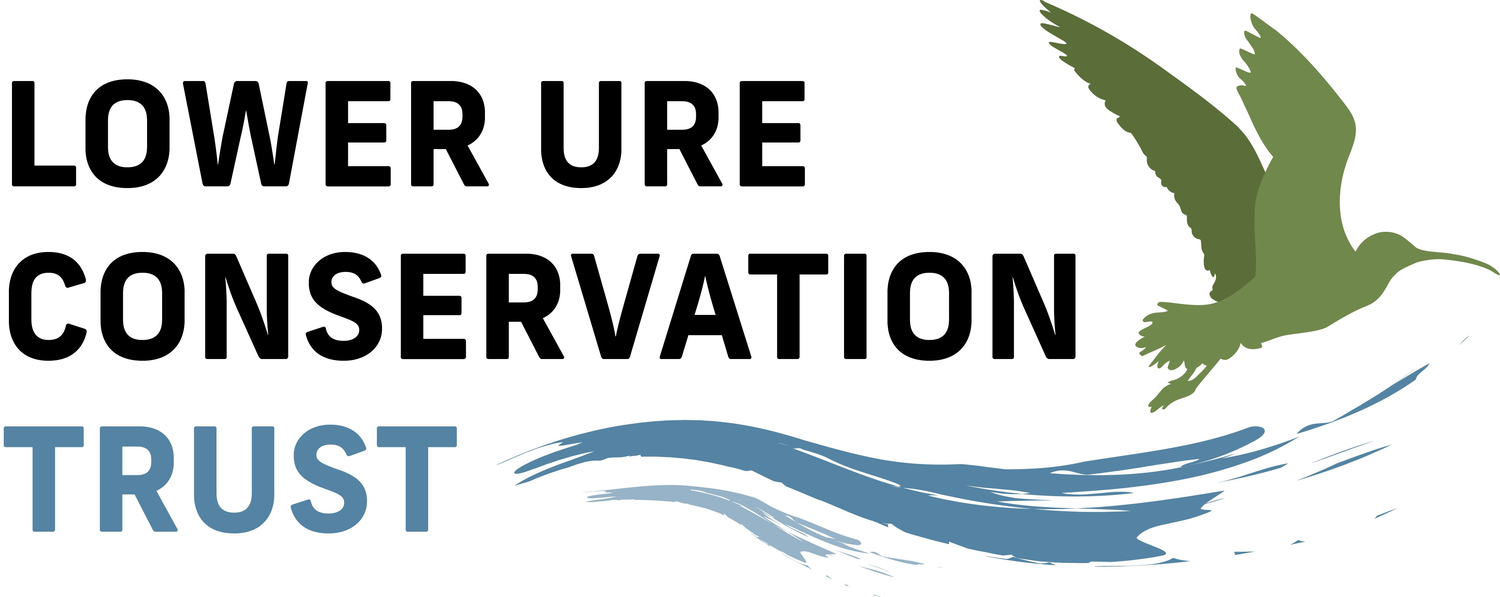Lower Ure Conservation Trust
Nosterfield Bird and Natural History Review August 2023
by Andrew (Andy) M Hanby
There are probably as many as five pairs of Kestrel in the whole recording area - although quite a hike is needed to log them all
Photo: Gareth Jones
To be expected, there were some predictable avian threads running through the month, some extending from the previous month. Most notable was the number of Osprey sightings, with a staggering 31 bird days involving one to two regular birds and as many as four transiting through south or general wanderers. On eight days there were two different birds able to entertain visiting birders, though some of these birders managed to play their hands wrong and leave without a sighting.
Another important species for us is Curlew and August is a time when returning birds, presumably including some, if not most, from the continent, build up. The first day of the month saw a minimum of 270 in the area, with 408 present by 8th, the highest count for this month in the last three years.
Good numbers of Lapwing, up to 2000, stayed very much in line with recent years counts as did the traditionally low numbers of Golden Plovers.
It was also nice to see Kingfishers being seen more regularly with up to two birds - always crowd pleasers, the Flasks Lake/Reedbed/Kiln Lake areas were the best spots to see these, although another spot, the river, does not seem to have been looked at for several months.
Unexpectedly returning to trend, Little Egrets seem to be on a downwards slope over the last three Augusts. In 2021 this species was documented on 17 days with counts of 10 or more on over half and a peak of 24, the following year only six days, with a peak of 11 and this year 14 days, also with a peak of 11. Considering the number of active observers has increased and the species is somewhat conspicuous, this would appear to represent a real drop, though three data points is arguably statistically weak.
Where an August drop is most profound is with regard to Great White Egret. The single record this month, on 25th represents the only record this year! Last August there were 12 bird days, with two on three days and up to four different individuals - plus ça change!
The year’s only Great White Egret
Photo: Tim Jones
August is a good month for returning chats and by that I don't mean the idle gossip conducted at Langwith gate. One to two each of Whinchat, Wheatear and Redstart were seen through the month.
Spotted Flycatcher fared less well, with only one bird around the Langwith car park, from 12th-14th.
Another August tradition is the build-up of Lesser Black-backed Gulls, with birds mostly shared between Flasks beach and Langwith. A count of 556 on 7th was a prelude to a count of 1173 on 10th. Interestingly, this species was moving through the area throughout 10th and the actual number of birds could have exceeded 2000. The principal counter that day was counting from Langwith gate in the evening and noted that all the gulls left south last thing.
Rather more exotic was a Sandwich Tern through Langwith on 7th. A localised build-up of Green Sandpipers over the next few days resulted in four present on 11th - for us a pretty good number. The ‘waderfest’ continued the next day, with a flock of 15 Whimbrel over and a Grey Plover through on 14th, on which date an Arctic Tern settled on Flasks Lake, with another there on 23rd.
Green Sandpiper, Ringed Plover and Greenshank all contributed to the migrant waders on the move in August
Photo: Tim Jones
Passerines also made a bid for the limelight, with a flock of 37 Long-Tailed Tits on 15th and 31 Mistle Thrush on 17th.
A true local rare was discovered by armchair birders on the internet on 19th, when a gull photographed during the day was identified as a Caspian Gull. A second bird was photographed on 23rd. This is a very rare species locally, and interestingly, and appropriately, the appearances coincide with a pronounced influx of the species into the north-east of the UK.
A Yellow-legged Gull 4th and Caspian Gulls 19th and 23rd respectively
Photos: Tim Jones, Gareth Jones & Tim Scott respectively
Seven Swift over the recording area on 27th were nice to see, but even better was the Shag on the Reserve the following day, a species which has not been seen in the recording area for a great many years – indeed, I have never heard of one in the 23 years I have been associated with the area!
All in all, an interesting month.
Andrew Hanby 05/09/2023






